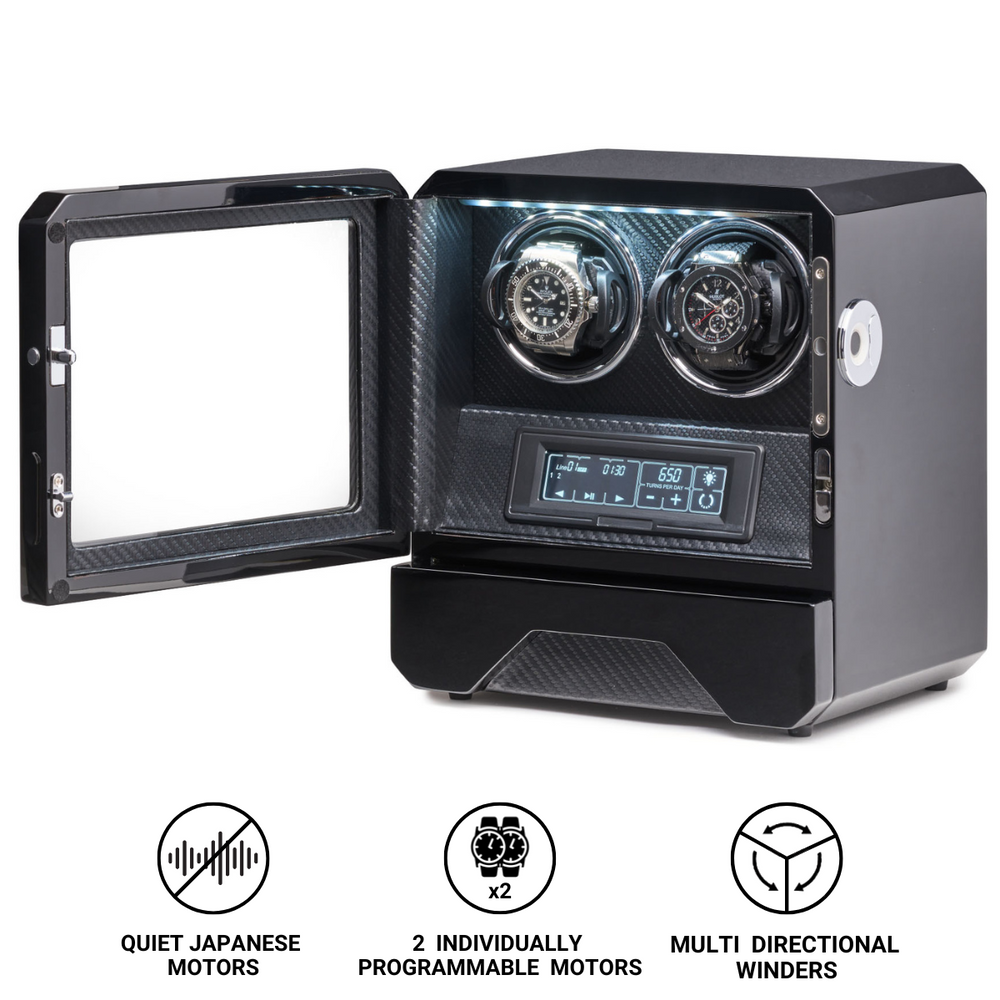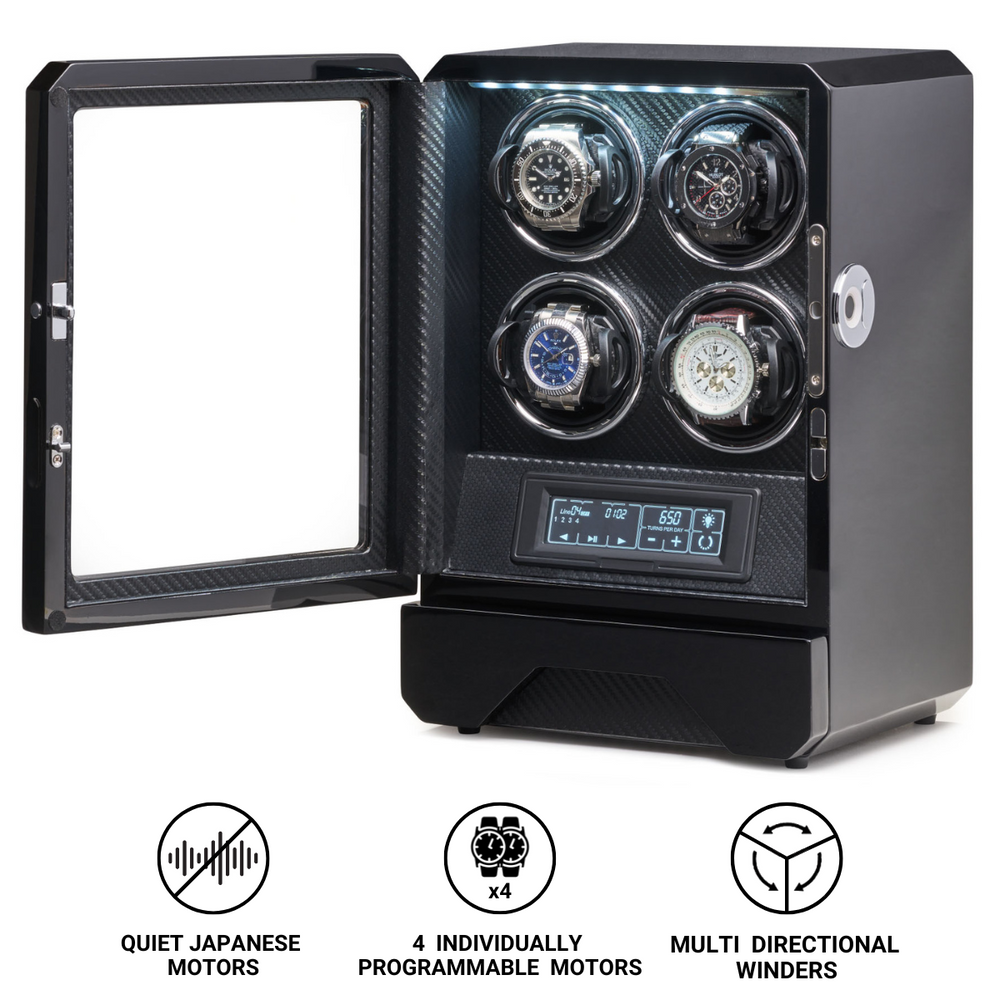What is Cathedral Hands?
Among the many stylistic details that define a wristwatch, few are as distinctive and evocative as cathedral hands. Recognised for their intricate, elongated form and gothic charm, these hands stand as an enduring tribute to early 20th-century design. They are not merely functional components that indicate the time but expressions of craftsmanship, architecture, and heritage. The name itself draws from their resemblance to the ornate tracery and stained-glass windows of medieval cathedrals, structures that have inspired awe for centuries.
Cathedral hands occupy a special place in horology because they represent a bridge between art and utility. They carry a sense of refinement, echoing the aesthetics of an era when design was as important as precision. To understand cathedral hands is to appreciate the emotional and historical depth that they bring to the dial of a watch.
The Origins of Cathedral Hands
The origins of cathedral hands can be traced back to the early decades of the 20th century, particularly to the interwar years. During this period, wristwatches were evolving rapidly in both design and purpose. Many watches still borrowed stylistic cues from pocket watches, which had traditionally been a canvas for decorative expression.
Cathedral hands emerged as part of this stylistic transition. They were first seen on timepieces from the 1910s to 1930s, particularly on military and pilot watches. Their distinctive segmented design, often divided by thin filigree-like lines, made them both elegant and practical. The larger surface area allowed for generous applications of luminous paint, which improved legibility in low-light conditions, a critical feature for aviation and military use.
Their appearance coincided with the rise of Art Deco and neo-gothic influences in European design, when geometry, ornamentation, and craftsmanship were being reimagined across architecture, jewellery, and industrial arts. Watchmakers of the era sought to give their timepieces a visual language that combined mechanical innovation with artistic expression, and cathedral hands fitted this ideal perfectly.
Design Characteristics
Cathedral hands are easily recognisable by their elaborate, segmented design. The hour hand usually features a bulbous, cathedral-window-like pattern that expands outward from a narrow stem, often filled with luminous material. The minute hand is typically longer and thinner, tapering to a fine point, sometimes featuring similar decorative divisions.
The shape evokes the gothic arches and stained-glass windows of medieval cathedrals, with metal frames separating luminous sections much like leaded glass. This intricate detailing not only enhances visual appeal but also serves a functional purpose by defining the luminous zones clearly.
Cathedral hands are usually made from brass or steel and then polished, blued, or plated, depending on the aesthetic intent of the watchmaker. They can be rhodium-coated for a mirror-like shine, thermally blued for a vintage charm, or treated with black oxide for a bold, legible contrast against light-coloured dials. The proportions are carefully balanced so that their ornate appearance complements rather than overwhelms the dial.
What makes cathedral hands distinctive is the way they play with light and depth. The framework catches reflections, while the luminous filling glows from within, giving the hands a sense of dimensionality. This duality of shadow and illumination is part of their enduring allure.
Function Meets Aesthetics
Despite their ornamental quality, cathedral hands are highly functional. Their large luminous areas make them ideal for watches designed for visibility, such as pilot’s and field watches. Historically, radium or tritium was applied to their recesses to ensure readability in darkness. In modern times, these substances have been replaced by safer alternatives like Super-LumiNova, which provides the same glow without radioactivity.
Their unique silhouette also improves legibility by creating a clear distinction between the hour and minute hands. This was particularly valuable in early military watches, where quick time reading was essential. The hands’ generous size and contrast ensured that even at a glance, the time could be discerned with minimal effort.
Over time, cathedral hands became a symbol of refinement and nostalgia, appearing not only on functional tool watches but also on dress models that celebrate classic horology. Their enduring appeal lies in their ability to balance practicality with historical resonance.
Cathedral Hands and Vintage Watchmaking
Cathedral hands were a hallmark of early wristwatches produced by brands such as Longines, Zenith, Omega, and LeCoultre during the 1920s and 1930s. They often appeared on trench watches, pilot’s watches, and early waterproof models. These watches reflected the transition from ornate Victorian styling to more modern yet still decorative aesthetics.
During this era, watchmakers paid close attention to details that today might seem purely decorative. The choice of hands, numerals, and dial layout were all part of an integrated design philosophy. Cathedral hands, with their intricate geometry and luminous capacity, were the perfect match for enamel or porcelain dials, which were popular at the time.
Collectors today highly value vintage watches featuring original cathedral hands, especially when the luminous material has developed a natural patina. The aged lume, often turning to a warm ivory or caramel tone, enhances their character and authenticity.
Modern Interpretations
In contemporary watchmaking, cathedral hands have experienced a revival. Many brands have reintroduced them in reissues of their historical models or incorporated them into new designs that pay homage to early aviation and exploration watches.
For example, pilot’s watches from brands like IWC, Longines, and Zenith often use cathedral hands to maintain historical continuity. Similarly, independent watchmakers who draw inspiration from early 20th-century design use these hands to evoke nostalgia and craftsmanship.
Modern manufacturing techniques allow for greater precision in producing the delicate metal framework of cathedral hands. Advanced coatings, laser cutting, and improved luminous compounds have made it possible to reproduce their beauty with exceptional clarity and durability.
Some contemporary interpretations even play with the proportions and finishes of cathedral hands, introducing skeletonised variants or mixing polished and brushed textures. This blending of traditional form with modern technique ensures that cathedral hands remain relevant in an era of evolving watch aesthetics.
Symbolism and Emotional Appeal
Beyond their technical and aesthetic merits, cathedral hands hold symbolic meaning. They embody a sense of timelessness, echoing the architectural grandeur and spiritual aspiration of the cathedrals that inspired them. The gothic arches represented in their form can be seen as metaphors for human creativity reaching towards the heavens, a theme that resonates deeply in the context of mechanical watchmaking.
For many collectors and enthusiasts, owning a watch with cathedral hands connects them to a golden age of horology. It recalls a period when even utilitarian tools were imbued with artistry, when design was guided not only by necessity but by emotion and beauty.
Cathedral hands also evoke a sense of continuity. Just as cathedrals were built to endure for centuries, these hands remind us of the longevity and permanence that fine watchmaking aspires to. They reflect the craftsman’s desire to create something enduring, to capture light, form, and motion in a way that transcends time.
The Relationship Between Cathedral Hands and Dial Design
The success of cathedral hands depends greatly on the context of the dial they accompany. Their ornate character demands balance and restraint elsewhere in the design. Typically, they pair best with simple Arabic or Roman numerals, clean chapter rings, and classic vintage-style layouts.
Watches that feature cathedral hands often avoid overly busy dials, allowing the hands themselves to become the focal point. The interplay between the dial colour, texture, and the hands’ metal finish is critical. A dark dial with gilt cathedral hands exudes warmth and depth, while a light dial with blued hands offers contrast and sophistication.
Designers must also consider proportion. Cathedral hands that are too large can overwhelm a dial, while those too small lose their decorative impact. The ideal watch balances the elaborate detailing of the hands with an overall harmony of design, ensuring that they enhance legibility while adding character.
Notable Watches Featuring Cathedral Hands
Many classic and modern timepieces have used cathedral hands to great effect. Vintage examples include early Longines pilot watches, Omega trench watches, and the Zenith Pilot Type 20 models. In more recent years, brands such as IWC and Oris have revived the style in their heritage collections.
Independent brands have also embraced the aesthetic. Smaller ateliers and bespoke watchmakers use cathedral hands to capture the romance of early mechanical horology. In haute horlogerie, some manufacturers incorporate gold or hand-polished cathedral hands into limited editions, treating them as miniature works of art in their own right.
These watches demonstrate the versatility of the design: cathedral hands can appear equally at home on a rugged military-inspired model or on a refined, elegant dress watch.
The Legacy of Cathedral Hands
Cathedral hands continue to occupy a cherished place in the vocabulary of watch design. They stand as reminders that even the smallest components of a timepiece can convey artistry and meaning. Their ornate form speaks of an age when craftsmanship and creativity were inseparable, and their survival into modern watchmaking proves their timeless appeal.
For watch enthusiasts, they represent more than a design choice. They symbolise a connection to history, an appreciation for detail, and a celebration of human ingenuity. Whether seen through the sapphire crystal of a luxury reissue or glowing faintly on the wrist of a vintage pilot’s watch, cathedral hands remain among the most poetic expressions of horological art.
Conclusion
Cathedral hands are more than just instruments for telling time. They are miniature architectural marvels that capture the essence of both gothic artistry and mechanical precision. Their design reflects a dialogue between light and shadow, utility and beauty, tradition and innovation.
Through every era of watchmaking, from the early days of aviation to modern reinterpretations, cathedral hands have maintained their power to captivate. They remind us that the true magic of a watch often lies not in its complexity but in its details – the delicate lines, the luminous glow, and the craftsmanship that transforms metal into art.
In a world where design trends come and go, cathedral hands endure as a symbol of timeless elegance, continuing to tell not only the time but also the story of horology’s enduring pursuit of beauty.









